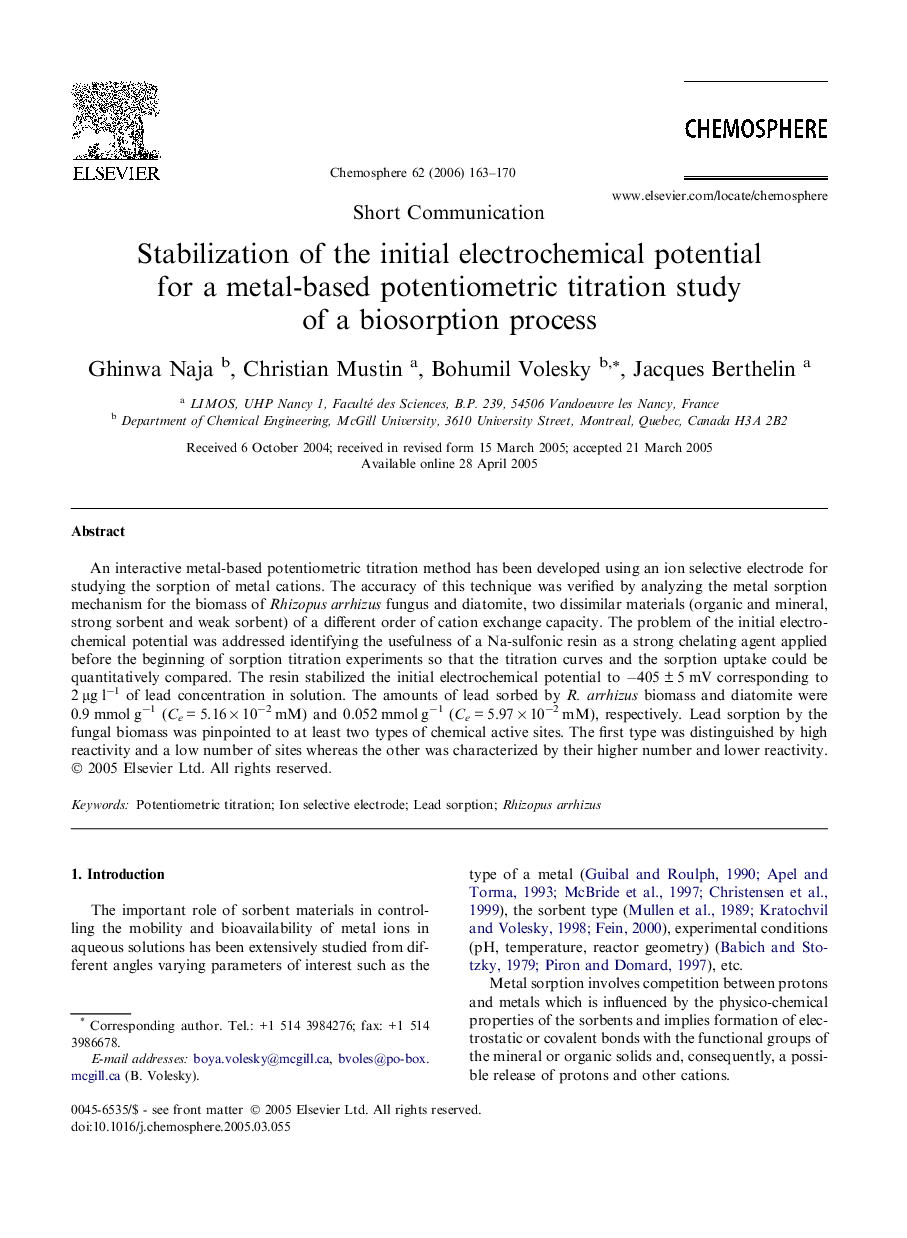| Article ID | Journal | Published Year | Pages | File Type |
|---|---|---|---|---|
| 4417079 | Chemosphere | 2006 | 8 Pages |
An interactive metal-based potentiometric titration method has been developed using an ion selective electrode for studying the sorption of metal cations. The accuracy of this technique was verified by analyzing the metal sorption mechanism for the biomass of Rhizopus arrhizus fungus and diatomite, two dissimilar materials (organic and mineral, strong sorbent and weak sorbent) of a different order of cation exchange capacity. The problem of the initial electrochemical potential was addressed identifying the usefulness of a Na-sulfonic resin as a strong chelating agent applied before the beginning of sorption titration experiments so that the titration curves and the sorption uptake could be quantitatively compared. The resin stabilized the initial electrochemical potential to −405 ± 5 mV corresponding to 2 μg l−1 of lead concentration in solution. The amounts of lead sorbed by R. arrhizus biomass and diatomite were 0.9 mmol g−1 (Ce = 5.16 × 10−2 mM) and 0.052 mmol g−1 (Ce = 5.97 × 10−2 mM), respectively. Lead sorption by the fungal biomass was pinpointed to at least two types of chemical active sites. The first type was distinguished by high reactivity and a low number of sites whereas the other was characterized by their higher number and lower reactivity.
